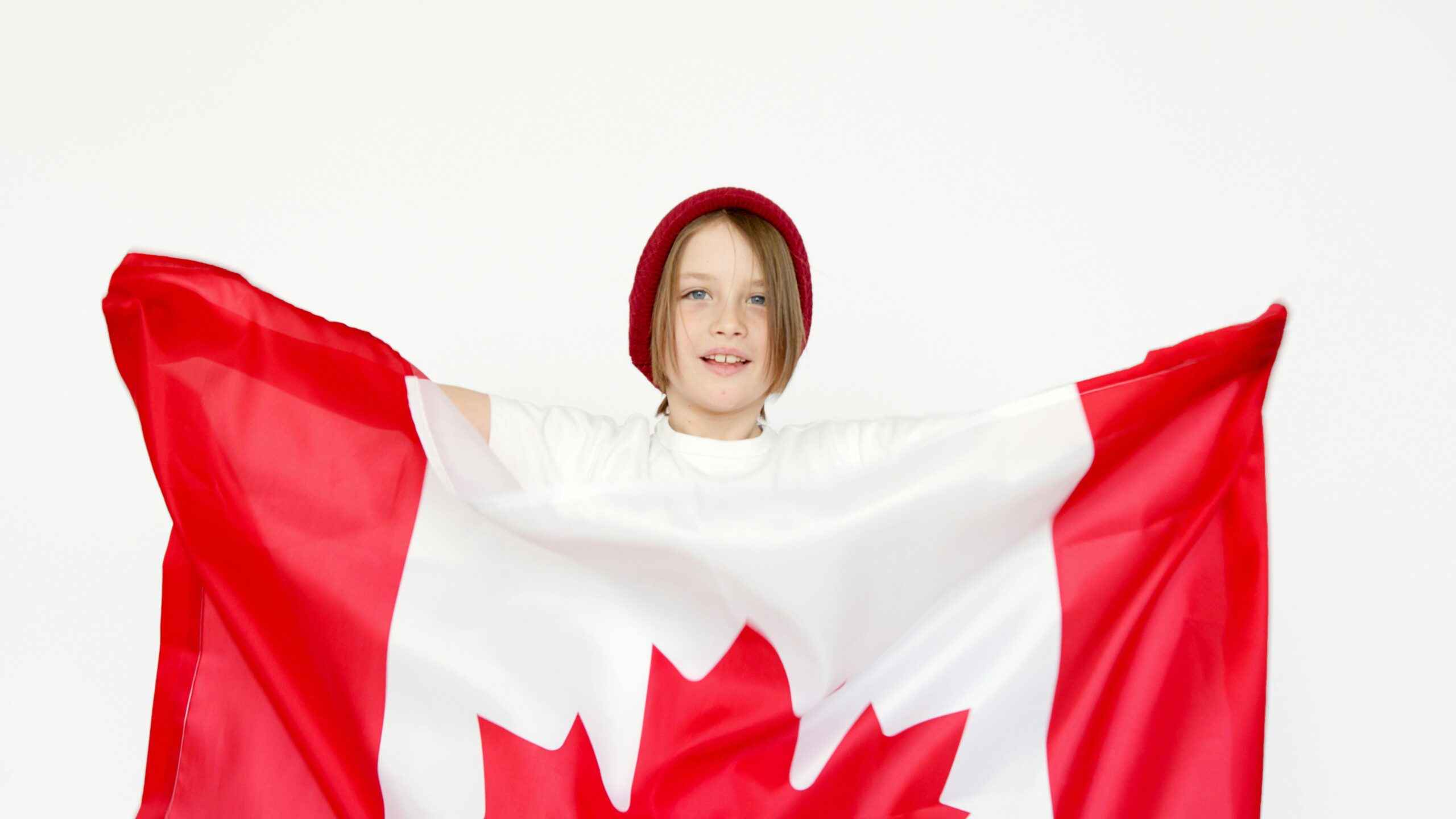Understanding the cultural tapestry of a new country is a vital part of the settlement process. Beyond official languages and laws, the subtle nuances of local customs, folklore, and even superstitions offer profound insight into the national character. For those beginning their journey in Canada, familiarity with these beliefs can enrich their experience and foster a deeper connection to their new home. Canadian folklore is a fascinating blend of Indigenous traditions, European heritage, and symbols born from the country’s unique landscape. From the spiritual significance of the Northern Lights to the simple luck of a penny, these beliefs are woven into the daily lives and conversations of many Canadians.
This article explores seven notable Canadian good and bad luck beliefs, providing context and understanding for newcomers. Engaging with these stories is not just an exercise in cultural learning; it is a way to appreciate the diverse histories and values that have shaped Canadian identity over centuries. Whether rooted in ancient Indigenous wisdom or shared Western traditions, these superstitions reveal a collective imagination that continues to thrive from coast to coast to coast.
[toc]
Whispers of the North: Indigenous Traditions and Celestial Omens
Many of Canada’s most evocative beliefs are deeply connected to its vast, natural landscapes and the ancient traditions of its Indigenous Peoples. These superstitions are not mere tales but are steeped in spiritual significance and a profound respect for the natural world. Two of the most powerful examples are the beliefs surrounding the dreamcatcher and the awe-inspiring Aurora Borealis. The dreamcatcher, originating from the Ojibwe people, is a widely recognized symbol far beyond Canada’s borders. Traditionally, it is a handmade willow hoop, woven with a net or web, and often adorned with sacred items like beads and feathers. Its purpose is to act as a spiritual filter. When hung above a bed, it is believed to catch bad dreams and negative spirits in its web, allowing only good dreams to pass through the central hole and slide down the feathers to the sleeper. This powerful symbol represents protection, unity, and the importance of positive energy, a concept that resonates deeply within many communities across Canada.
Similarly, the Aurora Borealis, or Northern Lights, holds a sacred place in the folklore of many Northern Indigenous groups, including the Inuit and Cree. Far from being just a stunning celestial phenomenon, the dancing lights were traditionally seen as the spirits of the ancestors playing a game in the sky or as messages from the spirit world. Some legends caution against whistling at the lights, as it might draw the spirits closer or cause them to sweep the whistler away. Others view the Aurora as a benevolent omen, a sign of guidance and protection from the spirit realm. This belief underscores a worldview where nature is not separate from the human and spiritual worlds but intricately connected. For newcomers, understanding these perspectives offers a glimpse into the deep spiritual heritage that is a foundational element of Canada’s cultural identity, reminding us that the land itself is a source of story and meaning.
Embracing Canadian Seasons: Profound Beliefs in Snow and Foliage
Canadian identity is inextricably linked to its distinct and often dramatic seasons, and it is no surprise that folklore has emerged around their transitions. The first snowfall of the year, for instance, is more than just a meteorological event; for many, it carries a sense of magic and renewal. A common belief holds that making a wish on the first snowflake you see in the season will make it come true. This tradition transforms the arrival of winter from a dreaded cold spell into a moment of hope and personal reflection. It speaks to a cultural tendency to find beauty and opportunity in the face of harsh conditions, celebrating the quiet purity that a fresh blanket of snow brings. This simple act of wishing connects individuals to the cyclical rhythm of nature, marking a fresh start and a time to look inward before the long winter ahead. It’s a gentle, optimistic superstition that encapsulates the resilient and hopeful spirit often associated with Canadians.
Equally powerful is the symbolism of the maple leaf, Canada’s most iconic emblem. While its status as a national symbol is official, its significance in folklore runs deeper. The maple leaf is widely considered a token of good luck, peace, and abundance. In historical contexts, its sap—the source of maple syrup—was seen as a life-giving force, and the tree itself a symbol of strength and endurance through the changing seasons. Some people believe that carrying a maple leaf can bring good fortune and protect against evil. This belief is tied to the tree’s resilience and its vibrant transformation of color in the autumn, representing life’s cycles and the beauty of change. For those making a new life in Canada, the maple leaf is more than just a design on the flag; it is a welcoming symbol that embodies the promise of growth, strength, and the sweet rewards of perseverance, much like the nation itself.
Timeless Luck and Caution: How Common Superstitions Manifest in Canada
Alongside uniquely Canadian beliefs, many superstitions prevalent in the country are shared with other Western cultures, though they often take on a local flavor. The ‘lucky penny’ is a perfect example. While the Canadian penny was officially taken out of circulation in 2013, the belief associated with it persists. The old saying, “Find a penny, pick it up, all the day you’ll have good luck,” is well-known. However, the Canadian twist is that the luck is only valid if the penny is found ‘heads up,’ with the Queen’s effigy showing. Finding it ‘tails up’ is sometimes considered neutral or even unlucky, with some advising to turn it over for the next person to find. This superstition highlights a focus on small fortunes and the idea that luck is something to be found and passed on. Even without the physical coin, the concept of finding small tokens of good fortune remains a part of the cultural lexicon.
On the other side of the spectrum are beliefs that warn of bad luck. The fear of the number 13, known as triskaidekaphobia, is as present in Canada as it is elsewhere. Many older buildings will omit the 13th floor, jumping from 12 to 14, and Friday the 13th is widely regarded as an unlucky day. Similarly, the superstition of not walking under a ladder is a common cautionary practice. This belief is rooted in both ancient symbolism—a ladder leaning against a wall forms a triangle, a shape seen as sacred, and walking through it was considered a violation—and practical safety. In a modern Canadian context, these superstitions serve as cultural shorthand for caution and an acknowledgment that some things are best left to chance. They are reminders of a shared heritage and the human tendency to seek control over the unpredictable.
Key Takings on Common Canadian Superstitions
- The Lucky Penny: Finding a Canadian penny ‘heads up’ is a sign of good luck for the day. Though no longer in circulation, the sentiment remains popular in folklore. The Unlucky Number 13: Consistent with Western tradition, the number 13 is often considered unlucky. This is reflected in building architecture (omitting the 13th floor) and the general apprehension surrounding Friday the 13th. Walking Under a Ladder: This is a widely held belief that doing so invites bad luck or misfortune. It stems from a combination of ancient spiritual beliefs about sacred shapes and modern practical safety concerns.
Frequently Asked Questions (FAQs)
What is the cultural significance of the Dreamcatcher in Canada?
The dreamcatcher originates from the Indigenous Ojibwe people and is a powerful symbol of protection. It is believed to filter out bad dreams and negative energy by catching them in its web, allowing only good dreams to pass through to the sleeper. It represents positivity, unity, and a deep spiritual tradition that is a foundational part of Canada’s heritage.
What do the Northern Lights (Aurora Borealis) symbolize in some Canadian folklore?
In many Northern Indigenous traditions, the Northern Lights are seen as the spirits of ancestors or as messages from the spirit world. They are not merely a natural event but a sacred and spiritual phenomenon. Some legends hold them as a powerful omen and caution against disrespecting them.
How is the first snowfall of the year viewed in Canadian superstition?
The first snowfall of the season is often seen as a magical time for renewal and hope. A popular belief is that if you make a wish on the first snowflake you see, it will come true. This tradition turns the arrival of winter into a positive and reflective moment.
What is the belief surrounding finding a Canadian penny?
Finding a Canadian penny is considered good luck, but only if it is found ‘heads up’ (with the image of the Queen facing upwards). This superstition suggests that fortune is something to be discovered. The penny was phased out in 2013, but the belief remains a charming piece of Canadian folklore.
Why is the number 13 often considered unlucky in Canada?
The belief that the number 13 is unlucky, a superstition known as triskaidekaphobia, is a shared Western tradition that is also common in Canada. It manifests in practical ways, such as buildings skipping the 13th floor, and a general cultural wariness of the number, especially on Friday the 13th.
Talk to us to find out more. ->
The content above is not intended to provide legal advice or opinions of any kind and may not be used for professional or commercial purposes.







